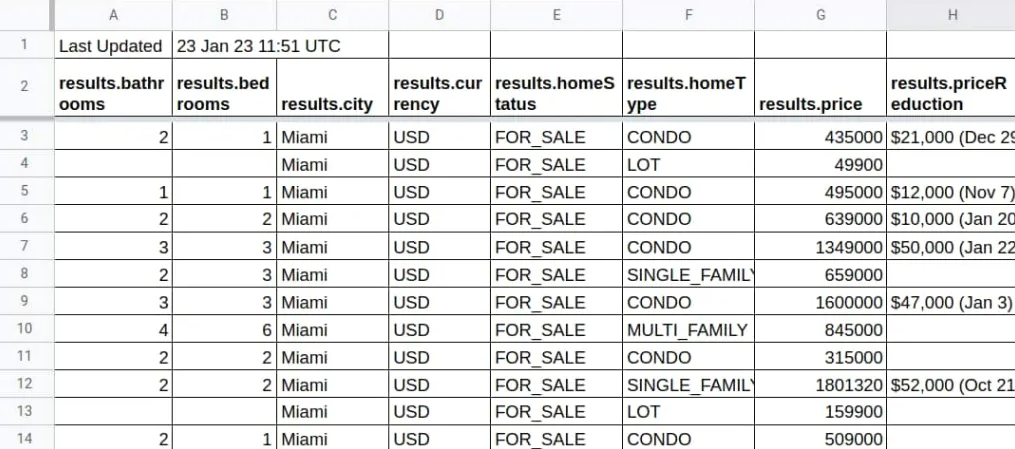Lucy Van Pelt: I know how you feel about all this Christmas business, getting depressed and all that. It happens to me every year. I never get what I really want. I always get a lot of stupid toys or a bicycle or clothes or something like that.
Charlie Brown: What is it you want?
Lucy Van Pelt: Real estate.
We are fairly active real estate investors, as we plan on using our real estate portfolio to provide us with the passive income to help us achieve PIRE. Aside from rebalancing our real estate portfolio, we have finished with the acquisition phase of our plans for real estate, although we’re still working on some other opportunities before finally pulling the plug (see “Why My Alpha Bias is Towards Entrepreneurship” for more on our long-term investing strategies).
The first time we bought a residential investment property, it was 2009, and the bottom had just fallen out of the housing market. We figured that buying a foreclosure was the way to go. However, back then, hard as it is to believe that there was once a time, even in the 2000s, when the Internet didn’t have as much ubiquitous knowledge as it does now, it was pretty challenging to find out a lot of information about properties that were available for sale, what their true value was, and any other information you’d want to know to make a wise real estate investment decision. So, we had to trust a Realtor, and she was, to put it kindly, terrible. Fortunately, in spite of this Realtor’s lack of efforts, we were able to buy a property, and, through a much better stroke of luck, found a property manager whom we still use 11 years later. Real estate investing was what got us to FIRE – financial independence, retire early.
Back in the dark ages, the key to getting real estate deals, if you weren’t going to bird dog yourself and go knocking door to door to find deals, was to find a Realtor who would give you some sort of access to the Multiple Listing Service (MLS), as even then, Realtor.com was a poor substitute for direct access to MLS. But, that still required you to work with the Realtor, come up with a set of criteria, and hope that the Realtor was on top of her/his game and would actually send you deals.
Furthermore, based on the types of acquisitions a residential real estate investor is going to go after versus the type of house a family with 2.5 kids is going to buy, there’s less commission in it for a Realtor to work heavily with an investor. Until you’ve done several deals with a given Realtor, that Realtor is also going to realistically question whether or not you’re a true deal maker or a tire kicker who saw some flipping shows on HGTV and thinks that you can become the next real estate superstar.
So, no matter how much you try to build a relationship with someone in the real estate business, the onus is truly on you to be a DIYer, at least when it comes to managing your own investment strategy.
I have a great relationship with our property manager (our families even went on a cruise together), but she manages well over 100 properties and is a real estate broker, so even though I am one of her two biggest property management clients, the reality is that we may represent 5% of her total income in a given year. While I get more attention from her than probably anyone else that she works with does, we’re not a big enough ticket item for her to get complete white glove treatment.
Therefore, over the years, we’ve had to develop a system that makes it easy for her to help me with our real estate investments.
Enter zillow.com.
Once upon a time, when we were first getting into the real estate game, Zillow was a just-past-startup company that didn’t have the greatest information in the world. Plus, since we were looking in more rural areas, their data wasn’t terribly up to date.
That’s changed. While Zillow still isn’t spot on for exact property values, it’s close enough to be in the ballpark where we can identify potential target properties and then use our property manager to really hone in on what we’re targeting.
We use Zillow in two ways: identifying targets and then getting a sense of when it might be time to rebalance our real estate portfolio.
Using Zillow to Identify Targets

This one is the easy one.
All you have to do is sign up for Zillow, go to the main page, put in your parameters as shown in the picture above, and then save the search. Once you save the search, Zillow will inquire about how often you’d like to receive an e-mail with new information. I prefer to receive the notifications immediately, because in real estate buying, time is of the essence. So, whenever a new property that fits my criteria hits the market, I receive an e-mail like the following:
Even with the filters, Zillow suffers from lazy Realtors who put in the wrong information into their MLS listings. Garbage in, garbage out. So, when a property looks particularly enticing, I’ll shoot my property manager a note to see what she thinks of it. There are certain aspects of a property that you will never be able to tell from Zillow, such as the sketchiness of the neighborhood (or of the neighbors, for that matter) that having a local agent serves as an invaluable tool. She’s steered me away from some too good to be true listings and saved our bacon (and money) on more than one occasion, such as the meth house that we looked at!
Eventually, if done correctly, you’ll have your own little real estate empire. If you bought well and added some sweat (or money) equity into the property, then you might have properties that are worth significantly more than what you paid for them.
That’s where the next phase of using Zillow comes in handy.
Using Zillow and Google Sheets to Determine When to Rebalance Your Real Estate Portfolio

When you own one or two rental properties, eyeballing the values is pretty simple. Check once a quarter, and you’re done.
When you own a true residential real estate rental property portfolio, doing that research manually becomes much more time-intensive, and, personally, I value my time much more than that.
Thus, I want to use automation instead!
Fortunately, now, with a couple of tools, non-programmers can use automation. I’m marginally smarter than a caveman, and I managed to set this up in about 15 minutes.
First, you’ll need to sign up for the Zillow Web Service. You’ll need to read the terms and conditions to make sure that you’re not going to run afoul of their rules, but since you’re using the data for your own personal use, you should be in the clear. Remember, I’m not a lawyer; if in doubt, consult your own legal counsel.
Once you’ve signed up and been approved, you’ll get a Zillow Web Services ID (ZWSID). Don’t lose it!
Next, you need to sign up for Google Sheets. If you have a Gmail account already, this is easy.
Then, you can use my sheet as your template. You can always add more data to it, but input information into the sheet as you see fit to do your own calculations.
To make the information useful, you’ll need to do a couple of manual steps.
First, either go to Google and search for the address and add Zillow to the end, or better yet, click on the link that you get in your Zillow Saved Searches e-mail:
Ideally, the result is a dead match, and you’ll want to copy the number between the / and _zpid in the URL bar.
If it’s not a dead match, then you’ll still click on the Zillow result.
Then, you’ll want to right click within the page and click on View Page Source, which will get you to a page of what seems to be gobbledygook (a formal IT definition).
Then, search for zpid on the page and copy the number between the / and _zpid in the highlighted URL.
Once you have the zpid, you have everything you need to find out the Zestimate.
Click on File–>Make a Copy and save the file to your own Google Drive. You don’t want people using your ZWSID, or you’ll lose access to it!
Input the information into the correct cells. Once you input the zpid, magic will happen!
Now, you can use this sheet to get real time, close enough values of your real estate portfolio using Zillow and Google Sheets. Time saved is time earned!
Author Profile
- John Davis is a nationally recognized expert on credit reporting, credit scoring, and identity theft. He has written four books about his expertise in the field and has been featured extensively in numerous media outlets such as The Wall Street Journal, The Washington Post, CNN, CBS News, CNBC, Fox Business, and many more. With over 20 years of experience helping consumers understand their credit and identity protection rights, John is passionate about empowering people to take control of their finances. He works with financial institutions to develop consumer-friendly policies that promote financial literacy and responsible borrowing habits.
Latest entries
 Low Income GrantsSeptember 25, 2023How to Get a Free Government Phone: A Step-by-Step Guide
Low Income GrantsSeptember 25, 2023How to Get a Free Government Phone: A Step-by-Step Guide Low Income GrantsSeptember 25, 2023Dental Charities That Help With Dental Costs
Low Income GrantsSeptember 25, 2023Dental Charities That Help With Dental Costs Low Income GrantsSeptember 25, 2023Low-Cost Hearing Aids for Seniors: A Comprehensive Guide
Low Income GrantsSeptember 25, 2023Low-Cost Hearing Aids for Seniors: A Comprehensive Guide Low Income GrantsSeptember 25, 2023Second Chance Apartments that Accept Evictions: A Comprehensive Guide
Low Income GrantsSeptember 25, 2023Second Chance Apartments that Accept Evictions: A Comprehensive Guide

